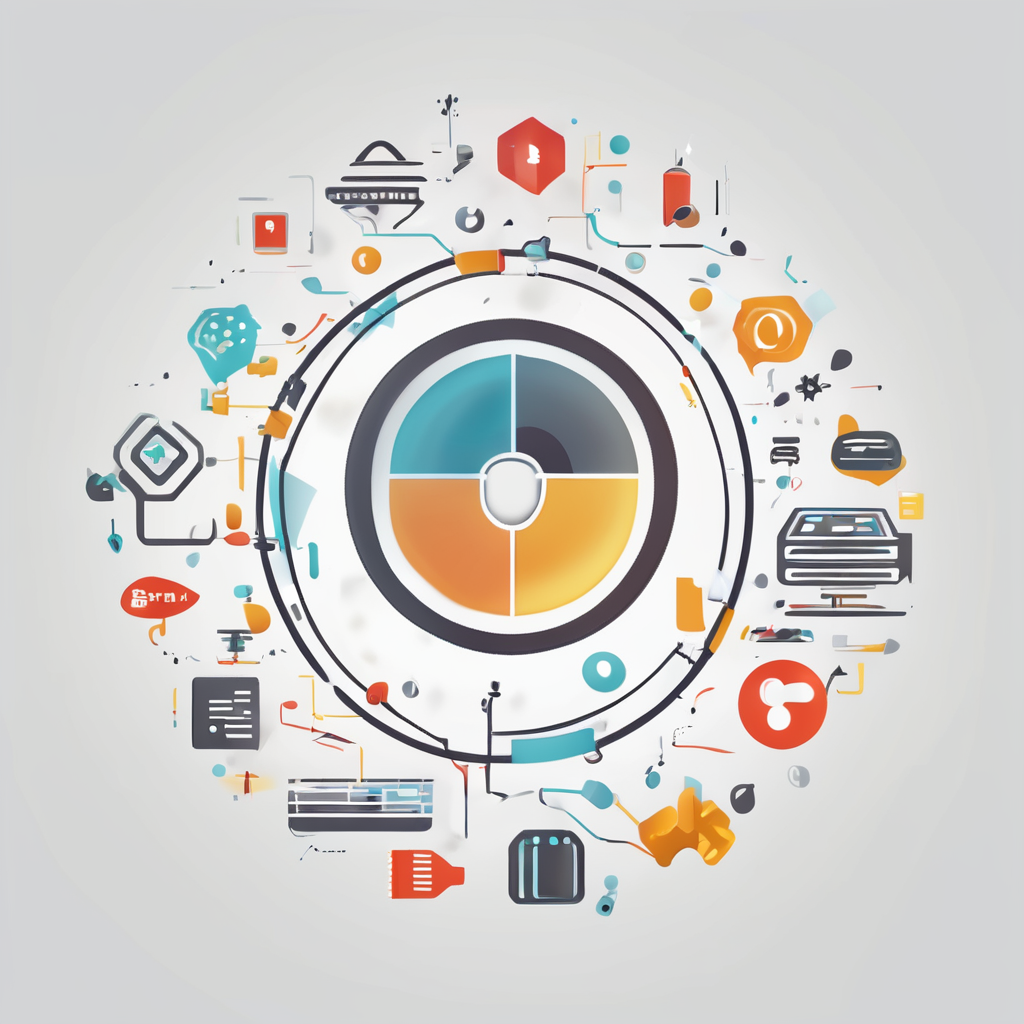Overview of IoT Gateway Development
An IoT Gateway acts as a connective bridge for processing data between IoT devices and the cloud. The significance of IoT Gateways lies in their ability to streamline communication and manage data traffic, making them pivotal in the IoT ecosystem. They enhance efficiency by translating protocols, filtering data, and enabling interoperability among various devices.
Secure Development is critical for IoT gateways to protect sensitive data and maintain privacy. With the proliferation of connected devices, potential threats increase, making robust security measures indispensable. Measures such as encryption, authentication, and regular security updates ensure that gateways defend against intrusions and data breaches.
Also to read : Top Strategies for Effectively Integrating AI into Fraud Prevention Systems
Scalability is equally important for addressing the growing number of IoT devices. Scalable Solutions accommodate the addition of new devices without compromising performance. They enable the integration of evolving technologies and datasets, ensuring seamless operation as demands increase.
Current trends influencing IoT gateway development include advancements in edge computing, enabling real-time data processing closer to the source to reduce latency. Adoption of AI and machine learning enhances predictive maintenance and operational efficiency. Additionally, increasing support for newer communication protocols like 5G facilitates faster and more reliable connections, proving essential for next-generation IoT applications.
Also read : Top Strategies for Seamless Integration of AI Chatbots in E-Commerce Customer Service
Key Security Frameworks for IoT Gateways
Implementing robust IoT Security Frameworks is essential for safeguarding connected devices. These frameworks ensure Threat Mitigation and bolster Data Protection.
Overview of Common Security Frameworks
There are several esteemed frameworks available, such as NIST (National Institute of Standards and Technology) and ISO (International Organization for Standardization), each providing comprehensive guidelines. NIST focuses on creating practical and scalable security strategies, allowing developers to adapt to various IoT environments. ISO emphasizes standardization and risk management, making it an ideal choice for global applications.
Best Practices for Implementing Security Measures
Managing IoT gateways requires a multi-layered security approach. Implementing Threat Mitigation involves using firewalls, intrusion detection systems, and network segmentation. Regular updates and patch management are crucial in maintaining the integrity of IoT systems. Authentication protocols can include two-factor or biometric verification for increased reliability.
Role of Encryption in Data Protection
Encryption stands as the cornerstone of data protection. End-to-end encryption ensures that data remains confidential from the source to the destination, effectively preventing unauthorized access. By employing algorithms like AES (Advanced Encryption Standard), organisations can achieve robust security for data in transit and at rest. Integrating encryption protocols with existing systems helps fortify overall data security standards.
Scalability Solutions in IoT Gateway Architecture
Scalability is paramount in an IoT gateway architecture to handle increasing amounts of data efficiently. When designing for scalability, it is crucial to incorporate scalable architecture principles from the outset to ensure performance and flexibility.
Designing for Scalability from the Ground Up
A fundamental aspect of developing a scalable architecture involves adopting a modular design approach. This strategy enables components to be added or modified without disrupting existing systems. It facilitates both horizontal scalability, which involves adding more nodes to distribute load, and vertical scalability, where resources of a single node are enhanced.
Load Balancing Techniques
Proper load balancing is vital for maintaining optimal performance. It involves distributing data traffic across multiple servers or nodes to prevent any single resource from becoming a bottleneck. Techniques such as round-robin and least connections ensure efficient resource usage and improve overall system reliability.
Integration with Cloud Services
Integrating cloud services into IoT architecture offers significant scalability advantages. Cloud-based resource management allows for on-demand scaling of storage and computing capacities. This integration supports dynamic resource allocation, reducing costs and enabling seamless expansion. Utilizing cloud services also provides resilience and flexibility, making it easier to adapt to fluctuating demands. These elements combined contribute to a robust architecture capable of meeting diverse IoT challenges.
Architecture Considerations for IoT Gateways
When it comes to building a resilient IoT Architecture, it’s crucial to consider a few key elements that ensure efficient operations. This involves a well-thought-out design for Network Management and robust Device Communication.
Key Architectural Components
At the heart of a solid IoT Architecture are its architectural components. These include sensors, gateways, and the cloud. Gateways serve as the crucial link between the physical world and digital realm, handling data collection and initial processing. It’s essential to integrate edge computing to reduce latency. Edge computing moves processing closer to the source, enhancing speed and reliability. This setup not only manages data traffic more effectively but also alleviates the burden on central cloud systems, fostering real-time decision-making.
Network Management Strategies
Effective Network Management ensures seamless data flow across devices. Given the myriad of connected devices in IoT environments, centralized management becomes vital. It facilitates network monitoring and troubleshooting, ensuring minimal downtime and streamlined operations. Utilising network management tools can significantly optimize data pathways, managing bandwidth allocation and security protocols across the network.
Managing Device Communication Efficiency
Efficient Device Communication is pivotal for minimizing bottlenecks. Optimizing protocols for communication helps in reducing data packet loss and improving response times. Protocols like MQTT or CoAP are preferred for their lightweight nature, offering low overheads which boost communication efficiency, thereby, enhancing overall system performance.
Common Pitfalls in IoT Gateway Development
In the rapidly evolving landscape of the Internet of Things (IoT), developing robust gateways is critical. Yet, numerous development challenges persist. Security remains a major concern, with security gaps frequently leading to vulnerabilities. Developers often overlook critical configurations, leaving systems exposed. Regular security audits and stringent access controls can mitigate these risks.
Identifying Security Vulnerabilities
Security gaps often emerge from misconfigured access controls or outdated encryption standards. To combat this, developers must adopt proactive measures. Conducting periodic vulnerability assessments ensures timely identification of loopholes, while robust encryption protocols safeguard data integrity.
Avoiding Performance Bottlenecks
Performance issues can significantly hinder IoT functionality. These commonly arise from inadequate resource allocation or inefficient data processing. Optimizing code and ensuring scalable infrastructure can prevent such bottlenecks. Utilizing performance monitoring tools helps maintain system efficiency and promptly address anomalies.
Managing Dependencies Effectively
Proper dependency management is paramount to avoid compatibility issues in IoT systems. Developers should track and routinely update software components to ensure reliability. Employing a comprehensive dependency management strategy mitigates integration challenges and enhances overall system performance.
In summary, addressing these development challenges—from closing security gaps to optimizing performance—requires a strategic and thorough approach. By adopting best practices in security, performance management, and dependency handling, teams can significantly enhance the resilience and functionality of IoT gateways.
Case Studies on Effective IoT Gateway Development
Exploring real-world applications of IoT, diverse industries have successfully implemented IoT gateways, showcasing innovative solutions. These studies not only highlight achievements but also present challenges and best practices that shape the future of IoT gateway development.
In the agriculture industry, IoT gateways monitor and optimize crop conditions, utilizing sensors for soil moisture and weather data. The challenge of data integration across varied sensor brands initially hindered progress. However, adopting standard communication protocols resolved this, facilitating smooth data flow and automation.
Another compelling example is in the automotive sector where IoT gateways enhance vehicle maintenance through real-time data collection. The hurdles included the vast amount of data generated and how securely this data could be handled. Utilizing dedicated data streamlining techniques and robust encryption helped manage these issues, ensuring secure, efficient operations.
In healthcare, IoT gateways support patient monitoring systems by transmitting data from wearable devices to central databases for analysis. Ensuring patient data privacy was a critical concern. By implementing advanced security models and continuously updating privacy policies, these challenges were effectively addressed.
Key lessons from these IoT case studies include the importance of adopting flexible, scalable solutions, ensuring data security, and fostering adaptability to rapidly changing technological landscapes. These insights are crucial for future projects aiming to deploy resilient and efficient IoT gateways.
Tools and Resources for IoT Gateway Development
Navigating the landscape of IoT gateway development requires understanding a broad array of tools and platforms that ensure efficiency and innovation.
Overview of Popular Development Tools
Several development tools stand out for their ability to streamline processes. Integrated Development Environments (IDEs) like Eclipse IoT are invaluable, offering features specifically tailored to Internet of Things applications. Debugging tools and simulation environments, such as Node-RED, facilitate real-time testing and iteration, making it easier to refine systems before deployment.
Recommended IoT Platforms
Selecting the right IoT platform is crucial for enhanced security and scalability. Platforms like AWS IoT and Microsoft Azure IoT Hub provide robust frameworks for managing connected devices securely. These platforms support extensive data analytics capabilities while ensuring compliance with industry security standards, allowing developers to build scalable solutions with confidence.
Accessing Learning Resources and Communities
To further one’s expertise, numerous learning resources are available. Online courses on platforms such as Coursera and Udacity offer structured learning paths. Engaging with forums like Stack Overflow or Reddit communities dedicated to IoT accelerates learning through shared knowledge and problem-solving. Exploring official documentation from platform providers also enhances comprehension, enabling more precise and efficient use of tools and resources.






